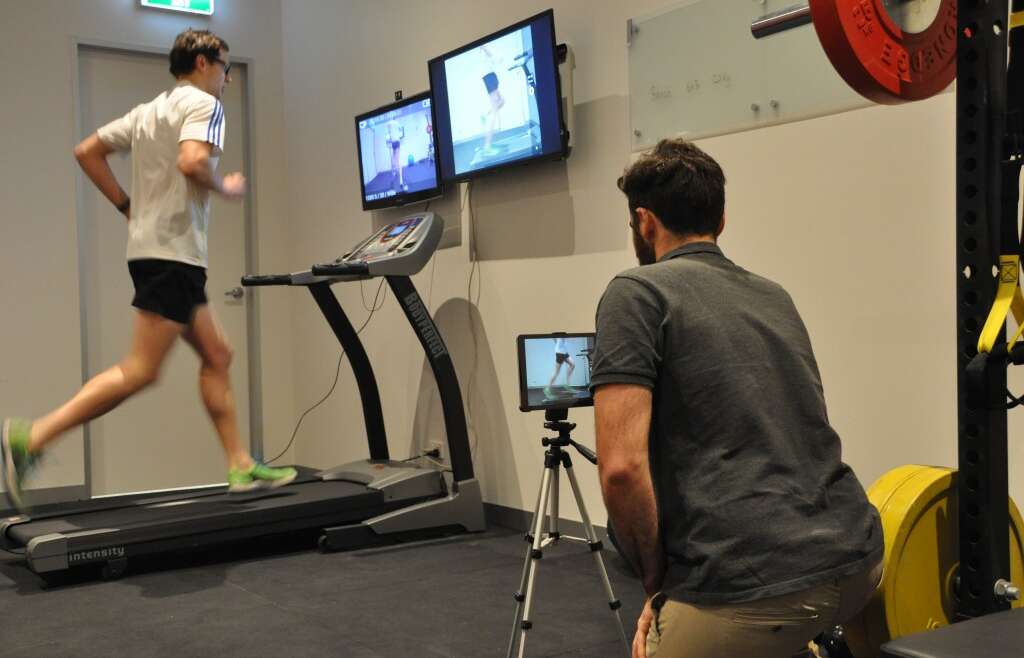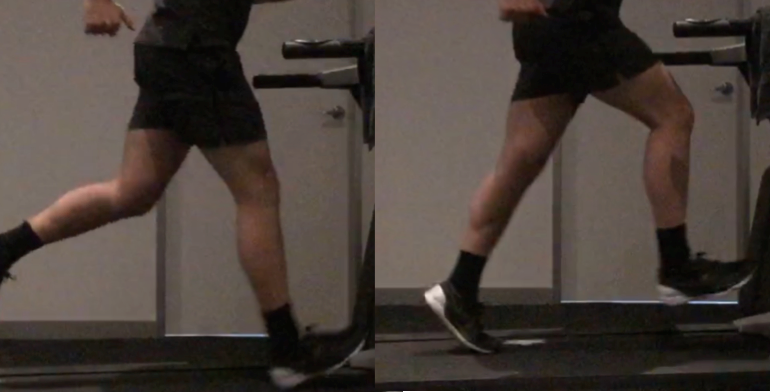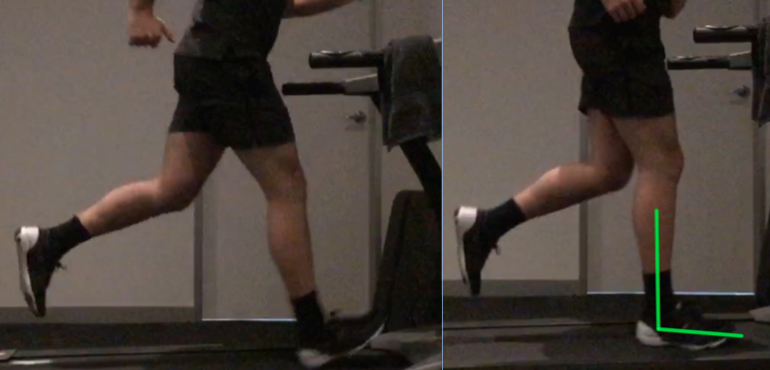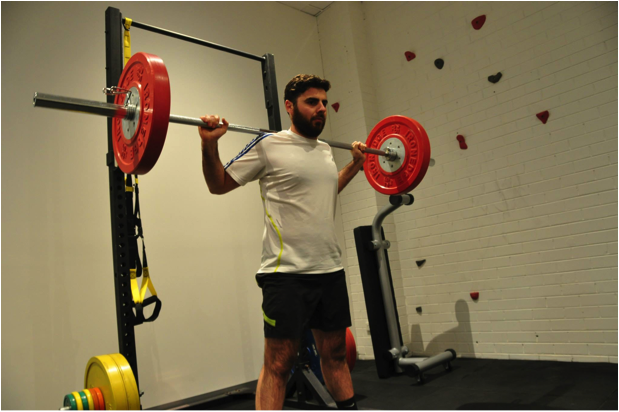Background
Anterior shin pain refers to any pain experienced at the front of the shin area (see image below). It is most often experienced during exercise, especially during running. Terms classically used to for anterior shin pain, but not entirely correct, are ‘shin splints’ or anterior compartment syndrome; we will explore the latter in greater detail.
The anterior compartment refers to all of the soft tissues (muscles, nerves, arteries and veins) located in the anterior fascial compartment (front area) of the lower leg. Anterior compartment syndrome, or chronic exertional compartment syndrome (CECS), has been around since the 1950s. But despite its relatively common occurrence, little research has been done to confirm the theory underpinning the diagnosis. CECS is theorised to cause pain from an elevated pressure in the anterior compartment of the leg during exercise, leading to ischaemic pain due to a decrease in blood flow. This is said to be due to an increase in muscle size in the compartment and/or tight (less compliant) fascia. The diagnosis is made through a clinical history, followed by an (somewhat invasive) intra-compartmental pressure test. Treatment for CECS usually involves a fasciotomy, which is where part of the facia is cut or removed in an attempt to free up space in the anterior compartment.
Recently, researchers and medical professionals have questioned the diagnosis. They cite lack of correlation between symptoms and the intra-compartmental pressure tests and the high percentage of failed fasciotomies for their doubt (Miller et al., 2012).
A recent paper by Miller et al., 2012 proposes a new way of diagnosing and treating anterior shin pain, and have coined the term ‘Biomechanical Overload Syndrome’ (BOS) to describe the condition. They believe the pain is caused by overload of the tibialis anterior muscle and subsequent fatigue due to sub-optimal running biomechanics, which may lead to the symptoms of anterior shin pain.
Running biomechanics associated with BOS
The Miller group consistently found that patients suffering from BOS in the anterior shin exhibited similar running mechanics. They observed that most patients excessively pointed their toes and foot upward (dorsi-flexion) during both swing phase and during foot strike (see picture below). Having the foot pointed in such a way for an extended period of time places a very high demand on the tibialis anterior muscle. After a period of time, it is believed these muscles will fatigue and lead to the symptoms of BOS.
Running analysis and re-training for BOS
Once running analysis has been performed, and if a patient is found to have biomechanics indicative of BOS, a running re-training program can be implemented. The aim of the running re-training is to offload the anterior compartment of the leg by changing certain biomechanical variables of the patients running style. These changes can include:
– Decreasing the amount of heel strike, moving towards a mid, or forefoot strike
– Shorter, quicker strides
– Increasing knee flexion at foot strike
– Upper limb cues such as running tall and keeping a compact arm swing
Runners will often see an improvement in their symptoms within a 12-week period. However, it is imperative that runners making these biomechanical changes understand that decreasing load on the anterior compartment will increase load on other areas, such as the calf and achilles. Therefore, while making these changes, runners should sufficiently modify their running load and increase it slowly to avoid sustaining foot, achilles and calf injuries in the re-training process.
At the Competitive Sports Clinic, when we re-train runners suffering from anterior shin pain, we almost always prescribe them some exercise rehabilitation in conjunction with their running program. This program will consist mainly of compound exercises aimed at strengthening the entire lower limb and posterior chain. A well-formulated strength program will help facilitate the necessary adaptations during the re-training period.
References:
Franklyn-Miller, A., Roberts, A., Hulse, D., & Foster, J. (2012). Biomechanical overload syndrome: defining a new diagnosis. British journal of sports medicine, bjsports-2012.
About the Author:
Dr. Nicholas Tripodi is a Co-director and Osteopath at the Competitive Sports Clinic located in the Essendon District. Nicholas has particular interests in sports injuries, exercise rehabilitation and running and cycling analysis.





